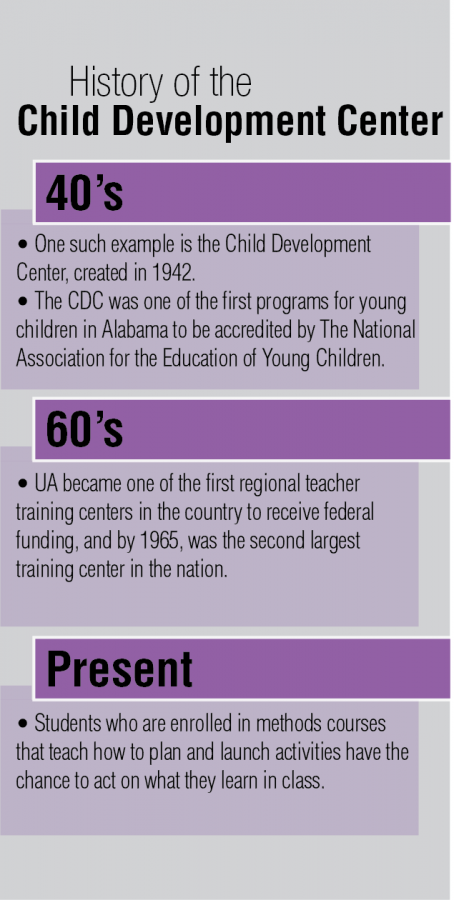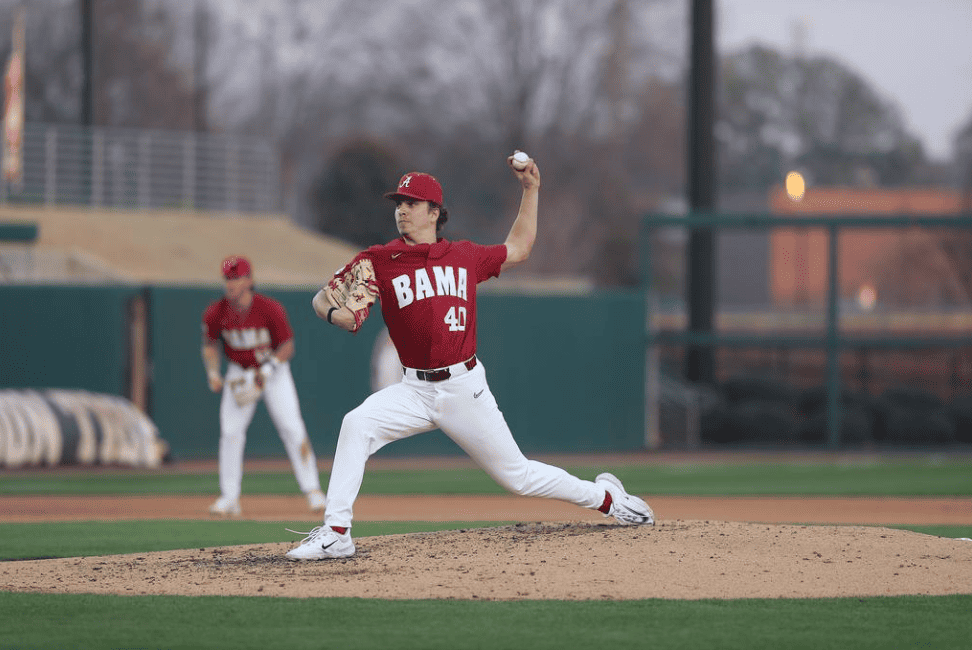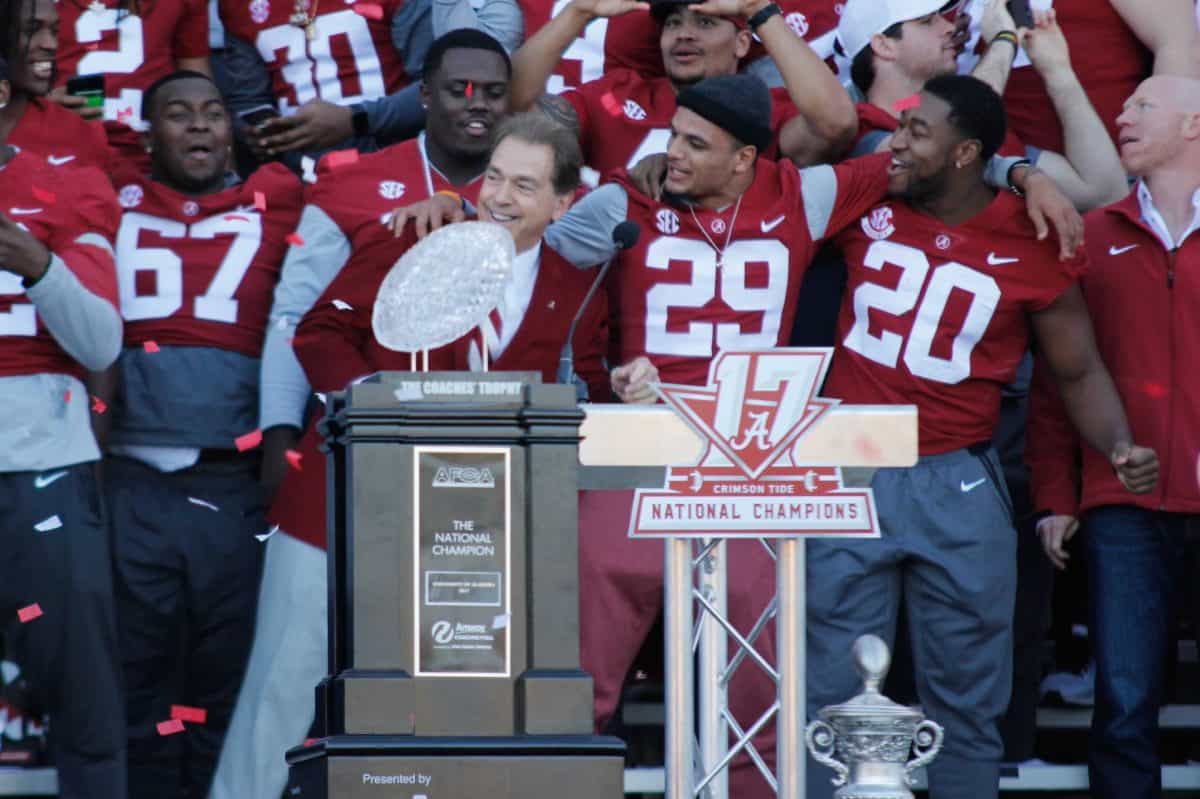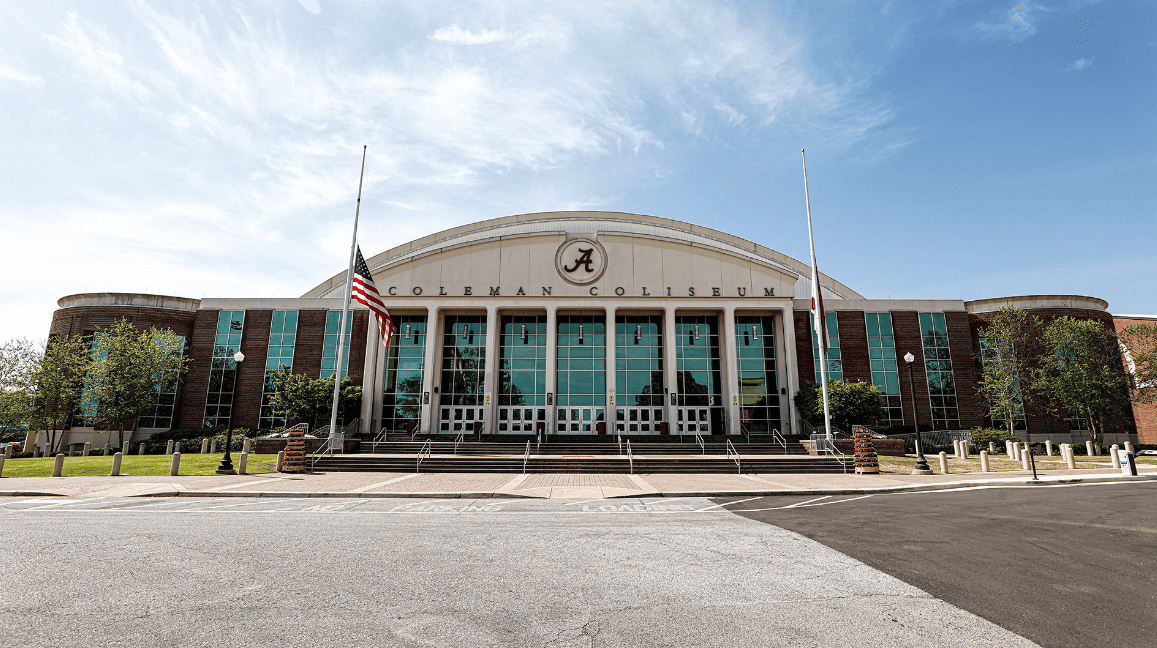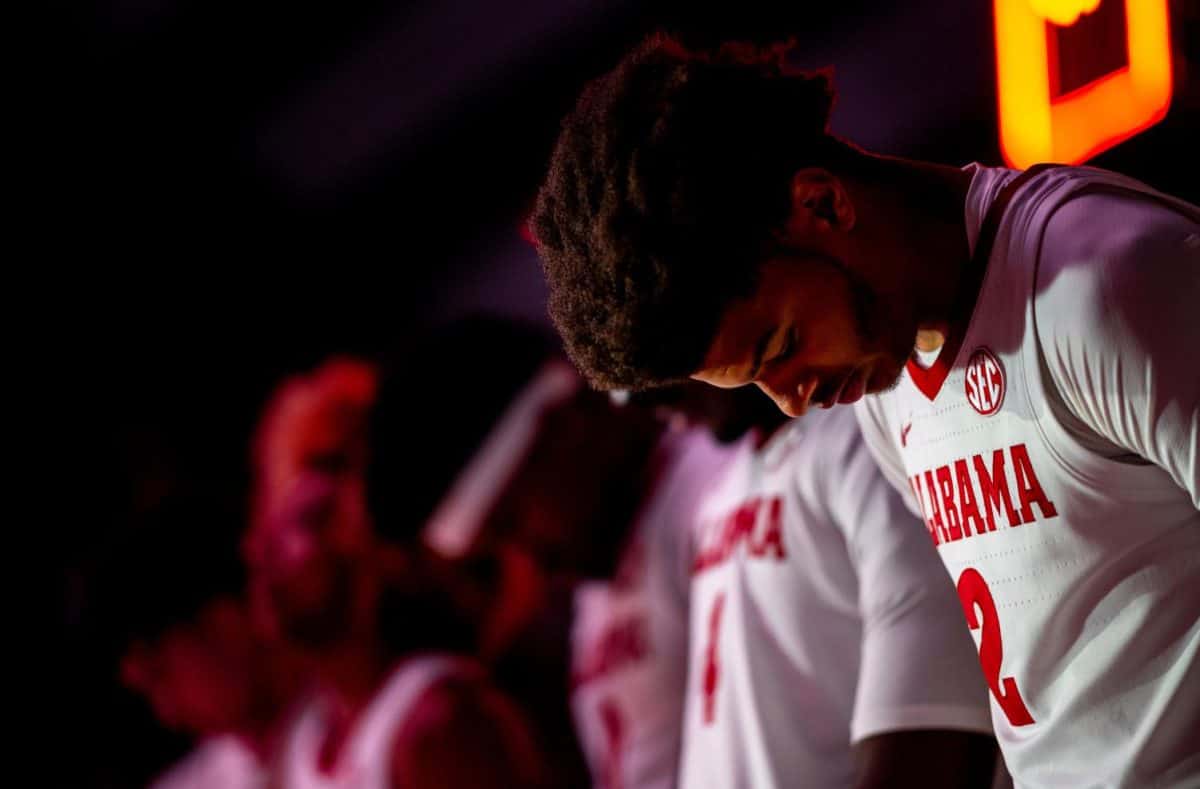“The Children’s Development Center is a laboratory program that educates future child development professionals about development and appropriate practices with young children,” said Laura Bloom, professor of Human Development and Family Studies. “It models high quality programming for child care providers in the state, region and nation, and offers an exemplary program based on a developmental perspective to the children of The University of Alabama faculty, staff and students.”
The center was among the nation’s first of its kind, and one of the first programs for young children in Alabama to be accredited by The National Association for the Education of Young Children. To Carroll Tingle, the chair of Human Development and Family Studies, this shows the consistency in the University’s dedication to Developmental Studies.
“It really goes back to the strength of our college, which has always been concerned with [developmental research],” Tingle said. “It’s purpose is to give UA students a place for experiential learning, to practice what they’ve learned in class, as well as serving as a research component for entire departments who are studying young children and families.”
Such research has continuously aided valuable programming, such as the Head Start supplementary training program the center was involved with in the mid-1960s. The University became one of the first regional teacher training centers in the country to receive federal funding, and by 1965, was the second largest training center in the nation.
“A whole wing of our center was built by the national Head Start program, and then president [Lyndon B.] Johnson’s wife, Lady Bird Johnson, came to campus and dedicated the South Wing,” Tingle said.
The long history of the observation lab continues to be carried on by more than tradition.
“A part of the rich history of the Children’s Program includes the motivation to be on the cutting-edge of research involving children and families,” Bloom said. “Faculty and staff members stay abreast of current trends in early childhood development and best practices in the field. This ensures that the children in the program are having an optimal experience and students who observe in the Children’s Program are able to see this in practice.”
This motivation for constant improvement is part of the two-fold mission of the lab: to provide a space not only for observation but also for teaching opportunities. Students, who are enrolled in methods courses that teach how to plan and launch activities, have the chance to act on what they learn in class.
“They are assigned to a lab classroom where they are able to actually implement such activities with the children, under the guidance and supervision of the lab teachers,” Bloom said. “The Children’s Program also offers internship opportunities for students who are pursuing a career that will involve working in an infant, toddler or preschool classroom setting.”
Logan McGeeney, a senior majoring in early childhood education, is one of the many students who have had the chance to get first-hand experience teaching in the lab.
“I was able to work in the classroom creating lesson plans and interacting with children,” McGeeney said. “The lab has shown me that I want to be a teacher, and specifically what age I want to teach. [The experience] made me passionate about working with kids.”
The Child Development Center has to provided both learning and research opportunities that have proven to be invaluable to the children, students and researchers who thrive within its walls.

